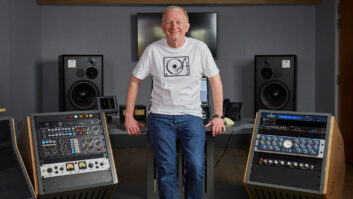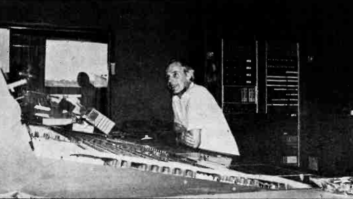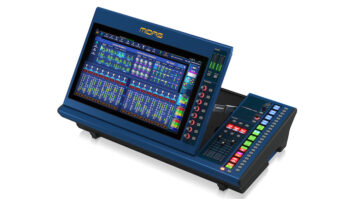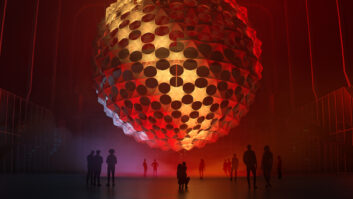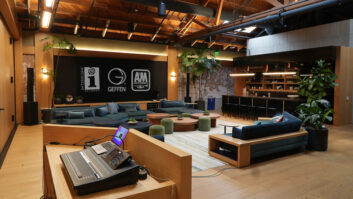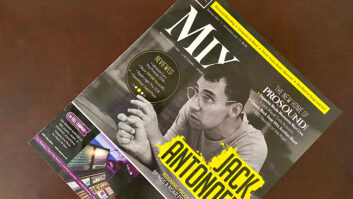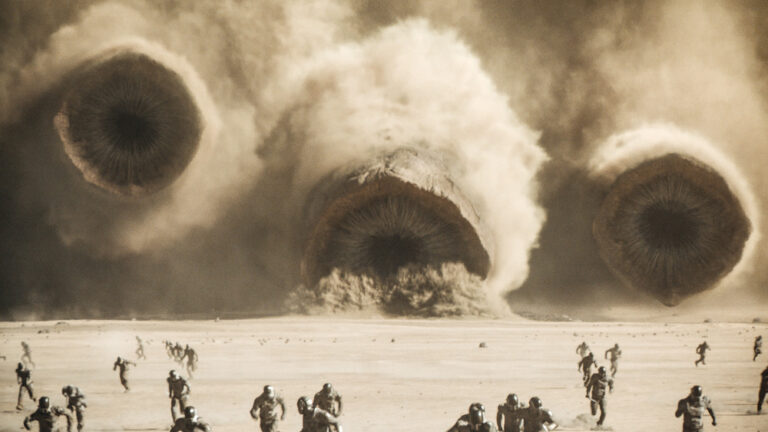
I went to see Dune: Part Two last Sunday afternoon, and I had a blast. Like most of the movie-going public, I saw the first Dune at home on HBO Max (now just Max) because it opened in the middle of the pandemic and WB had made the decision to release new films simultaneously to theaters and streamers. I have a decent TV with a better-than-most soundbar, and I loved the movie! But I knew something was missing.
So for Part Two, my buddy Jason and I headed down to the Dolby Cinema at AMC BayStreet in Emeryville, Calif., Theater 9. We wanted the big screen, with Vision and Atmos, comfy recliners and wide aisles. I even brought in a pint to go with my popcorn. We were like a couple of teenage boys, and we wanted SPL! Size and scale! The desert is big, and we wanted big! If you’re going to watch someone ride a sandworm, well, it should be a big sandworm! It was awesome. The three hours didn’t feel like three hours. At home, I might have paused at some point and taken a call. I might have stepped out to feed the dog or order dinner. But not here. Not when I’m completely immersed, sound and image, in a dark room with a bunch of other people. You don’t hit pause when the worm is two minutes away and you can see the swirling cloud of sand approaching.
I’d nearly forgotten what it was like to feel huge low-end thump you in the chest. I’m guessing that there were supplemental vibrators in the floor or seat, but maybe not. When the Harkonnen attack the Fremen sietch, or the spice harvester hits the surface, or the thumpers start calling for the sandworms, you feel it. When the Bene Gesserit voices start swirling around the room, with multiple echoes and delays, you become lost in your own head, within the cavernous hallways.
Then there’s the constantly shifting surfaces, with our heroes sandwalking/dancing across the desert. Howling winds and intimate dialog. Hans Zimmer’s rhythmic and pulsing, sometimes voluptuous, score. Headroom and dynamics. The total frequency range. The balance in the overall track and the movement of sound through space. The ability to hear as close as you can get to what the director and sound team intended. I could go on and on. The point is: I just can’t get that at home.
The music industry has no equivalent to the Dolby Cinema for playback. We now have Atmos and 360RA and Spatial, but rather than the playback target being a cinema, home theater or soundbar, the audience is primarily listening on headphones or in the background, rarely sitting down in a sweet spot of jockeying for the best seat. But it can happen.
At the recent Mix LA: Immersive Music Production event, we had a series called “Breaking It Down,” where we played back an Atmos track in the 13.1.10 L-Acoustics performance stage at UMG’s 21Fifteen Studios, followed by a discussion between UMG director of engineering Nick Rives and the mix engineer on the track. There were 80 seats for the audience and standing-room-only to the sides, so not everyone had a perfect “Atmos seat,” of course, but they all got a taste.
Bob Clearmountain talked about Roxy Music’s “Avalon” first, and I quickly realized by reading the crowd that when the discussion was over, they’d want to hear more, so I asked DJ Meadows at front of house to play it again at the end. Same for David Rideau on Miles Davis’ Kind of Blue and Ryan Ulyate’s “Dreamland,” from this year’s Grammy-nominated (Best Immersive Audio Album) Act 3. Everyone in the audience was rapt, swept up in the music.
Ulyate, who wrote, produced, sang and played on his independently produced record with Atmos in mind, told an interesting story of how, just for kicks, he held a record release party for family and friends at the Vine Theater in Hollywood, renting out an Atmos room for the night. About 60 people showed up and listened to 50 minutes of music—in the dark, no screen. The audience was completely engaged, he said, and came away from it raving about what a great experience it was to sit down and listen to music how the artist intended it to be heard.
That is a unique event, obviously; most consumers will experience music through headphones or soundbars. We know that, and they’re getting better, but from the creative side, speakers and rooms and space still matter. For balance decisions, panning moves, delays and reverb, compression and effects—and just for the feel of the song—every engineer at the event agreed: At some point in your Atmos music production process, you must listen to speakers. That’s not to say that headphones and binaural and stereo folddowns can’t play a crucial role at all phases, to fine-tune edits and QC deliverables. It’s just to say that speakers still rule.
After I got home from Dune: Part Two, while still basking in the overall experience, I recalled a conversation I had a few years ago with Andy Nelson, Oscar-winning re-recording mixer and an SVP at Fox Studio Lot Post Production, while he was working on Batman on the Hawks Stage at Fox. We were chatting about the new wave of versatile, mid-sized, Atmos mix rooms springing up all over Hollywood. He loves them, he said, and they are a perfect fit for the new style of production that had to meet the needs of both theatrical and home delivery. Then he paused and said, “But when it comes to the big movies, you still gotta push some air.”
—Tom Kenny, Co-Editor
